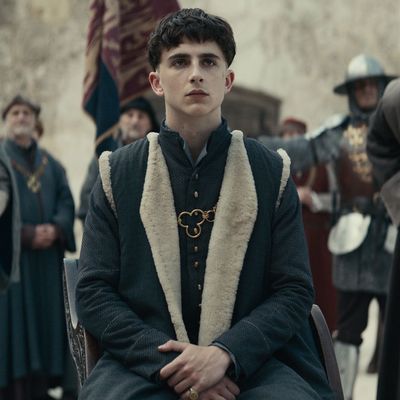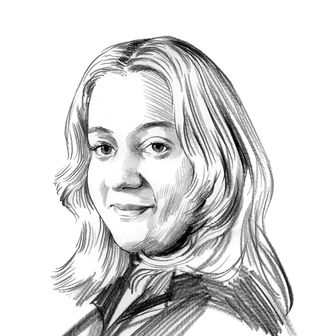
The world let out a defeated (but still horny) sigh last year when Timothée Chalamet, noted rap star of the aughts, eschewed a wig and got an acorn-bowl haircut to embody Henry V in Netflix’s new period drama The King. Was it historically accurate? Of course. Was there an uptick in requests for it at Park Slope barber shops in the ensuing months? We’re assuming yes. But, according to the film’s hair stylist Alessandro Bertolazzi, it took a bit of convincing for Chalamet to go all-in on the cut, given that our boy Lil Timmy Tim really loves his mop of curly follicles.
“He’s a really good guy and takes care of himself. He loved his hair,” Bertolazzi told Vulture in a recent interview. “Sometimes it seemed his hair was more important than himself. I don’t know if he wanted to cry or kill me in the beginning, but in the end, he realized how important the haircut was to his character. Thank God there were other people around me that supported me. We cut one inch and he was like, That’s enough, that’s enough! No, Timothée, it was just the beginning, we’ve gotta keep going.”
While the idea of fitting Chalamet for a wig was floated around for a bit, Bertolazzi and his team never relented on pushing for an actual cut, given that the actor had a perfect length of hair to achieve such a look. (The two other leading men in the film, Robert Pattinson and Ben Mendelsohn, indeed wore wigs to accommodate longer, wavier hairstyles.) “We made an acorn cut on Timothée, because that was the only way. We had to do a dramatic, visible transformation,” Bertolazzi said. “Henry was a party boy who became king. I fought for that cut, we needed that cut. Timothée is a sex symbol, even with that dramatic haircut. He’s a cool guy. We did many tests to show the haircuts of the time, and everybody was worried about how dramatic the haircut was going to be. You know when you’re sure about something? I was more than sure. This is my job.”
Interestingly, Bertolazzi added that the inspiration for the main acorn lewk came from the Middle Ages’ hottest trend epicenter: The church. “When you do a movie, you need to make something that pleases the actors and the egos of the actors. It’s not the same with period movies,” he explained. “This one was simple. In the Middle Ages, there was no ‘status’ of beauty. It didn’t exist. People didn’t care about beauty, both the common folks and the royals. The only reference was the church. The church made the rules. The men looked like priests or monks, and women looked like nuns.” Conveniently, Halloween is next week!


